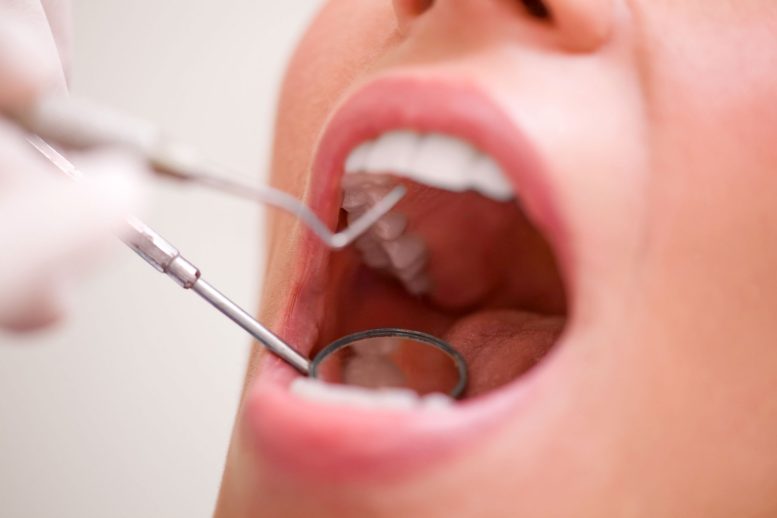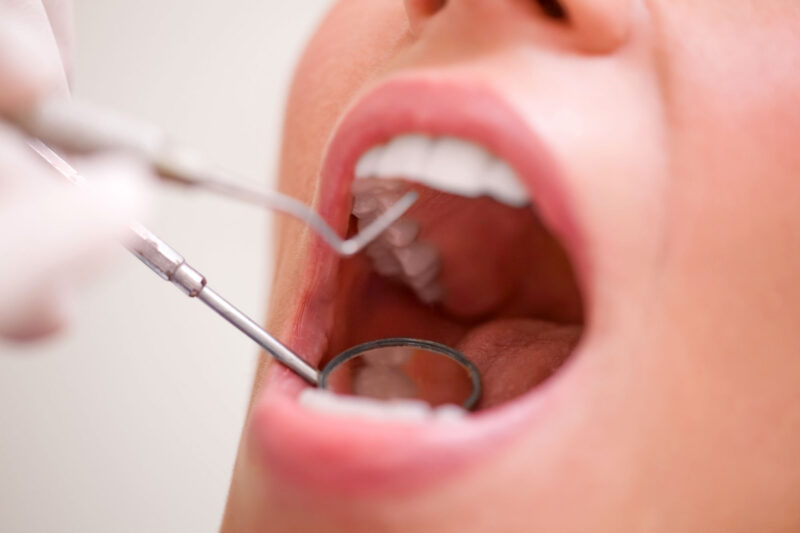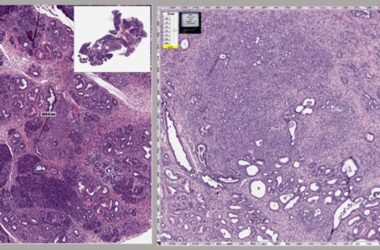
Certaines bactéries buccales sont liées à l’hypertension chez les femmes âgées, selon une nouvelle étude publiée dans le Journal of the American Heart Association.
- Dans une étude portant sur plus de 1200 femmes aux Etats-Unis, âgées en moyenne de 63 ans, 10 types de bactéries orales ont été associés à un risque plus élevé de développer une hypertension artérielle, tandis que cinq souches de bactéries étaient liées à un risque d’hypertension plus faible.
- L’étude d’observation ne peut pas prouver la cause et l’effet ; cependant, les résultats soulignent les possibilités d’améliorer la prévention de l’hypertension par des soins bucco-dentaires ciblés, ont déclaré les chercheurs.
Certaines bactéries buccales ont été associées au développement de l’hypertension, également connue sous le nom de pression artérielle élevée, chez les femmes ménopausées, selon une nouvelle recherche publiée aujourd’hui dans le bulletin d’information de l’OMS. Journal of the American Heart Associationun journal en libre accès, évalué par les pairs, de l’American Heart Association.
L’hypertension artérielle est généralement définie par deux mesures : une pression artérielle systolique (le chiffre supérieur mesurant la pression lorsque le cœur bat) de 130 mm Hg ou plus, et une pression artérielle diastolique (le chiffre inférieur indiquant la pression entre les battements du cœur) de 80 mm Hg ou plus.
Bien que des recherches antérieures aient indiqué que la pression artérielle tend à être plus élevée chez les personnes souffrant de maladies parodontales que chez celles qui n’en souffrent pas, les chercheurs pensent que cette étude est la première à examiner de manière prospective l’association entre les bactéries orales et le développement de l’hypertension.
“Puisque la maladie parodontale et l’hypertension sont particulièrement répandues chez les adultes plus âgés, si une relation entre les bactéries buccales et le risque d’hypertension pouvait être établie, il pourrait y avoir une opportunité d’améliorer la prévention de l’hypertension par des soins buccaux ciblés et accrus”, a déclaré Michael J. LaMonte, Ph.D., M.P.H., l’un des auteurs principaux de l’étude, professeur chercheur en épidémiologie à l’University at Buffalo – State University of New York and a co-investigator in the Women’s Health Initiative clinical center in the University’s epidemiology and environmental health department.
Researchers evaluated data for 1,215 postmenopausal women (average age of 63 years old at study enrollment, between 1997 and 2001) in the Buffalo Osteoporosis and Periodontal Disease Study in Buffalo, New York. At study enrollment, researchers recorded blood pressure and collected oral plaque from below the gum line, “which is where some bacteria keep the gum and tooth structures healthy, and others cause gum and periodontal disease,” LaMonte said. They also noted medication use and medical and lifestyle histories to assess if there is a link between oral bacteria and hypertension in older women.
At study enrollment, about 35% (429) of the study participants had normal blood pressure: readings below 120/80 mm Hg, with no use of blood pressure medication. Nearly 24% (306) of participants had elevated blood pressure: readings above 120/80 mm Hg with no medication use. About 40% (480) of participants were categorized as having prevalent treated hypertension: diagnosed and treated for hypertension with medication.
Researchers identified 245 unique strains of bacteria in the plaque samples. Nearly one-third of the women who did not have hypertension or were not being treated for hypertension at the beginning of the study were diagnosed with high blood pressure during the follow-up period, which was an average of 10 years.
The analysis found:
- 10 bacteria were associated with a 10% to 16% higher risk of developing high blood pressure; and
- five other kinds of bacteria were associated with a 9% to 18% lower hypertension risk.
These results were consistent even after considering demographic, clinical and lifestyle factors (such as older age, treatment for high cholesterol, dietary intake and smoking) that also influence the development of high blood pressure.
The potential associations for the same 15 bacteria with hypertension risk among subgroups was analyzed, comparing women younger than age 65 to those older than 65; smokers versus nonsmokers; those with normal versus elevated blood pressure at the start of the study, and other comparisons. Results remained consistent among the groups compared.
The findings are particularly relevant for postmenopausal women, since the prevalence of high blood pressure is higher among older women than older men, according to LaMonte.
More than 70% of American adults ages 65 and older have high blood pressure. That age category, the fastest growing in the U.S., is projected to reach 95 million by 2060, with women outnumbering men 2 to 1, according to a 2020 U.S. Census report. The 2020 U.S. Surgeon General’s Call to Action to Control Hypertension underscores the serious public health issue imposed by hypertension in adults, especially those in later life. Identifying new approaches to prevent this disease is, thus, paramount in an aging society.
According to the American Heart Association, nearly half of U.S. adults have high blood pressure, and many don’t know they have it. High blood pressure is a major risk factor for cardiovascular disease and stroke.
“We have come to better appreciate that health is influenced by more than just the traditional risk factors we know to be so important. This paper is a provocative reminder of the need to expand our understanding of additional health factors that may even be influenced by our environments and potentially impact our biology at the endothelial level,” said Willie Lawrence, M.D., chair of the American Heart Association’s National Hypertension Control Initiative’s (NHCI) Oversight Committee. ”Inclusive research on hypertension must continue to be a priority to better understand and address the condition.”
Due to the study’s observational approach, cause and effect cannot be inferred, limiting the researchers’ ability to identify with certainty that only some bacteria are related to lower risk of hypertension while others are related to higher risk. A randomized trial would provide the evidence necessary to confirm which bacteria were causal agents in developing – or not developing – hypertension over time, according to LaMonte.
Reference: “Oral Microbiome Is Associated With Incident Hypertension Among Postmenopausal Women” 2 March 2022, Journal of the American Heart Association.
DOI: 10.1161/JAHA.121.021930
Co-authors are Joshua H. Gordon, M.D., Ph.D.; Patricia Diaz-Moreno, D.D.S., Ph.D.; Christopher A. Andrews, Ph.D.; Daichi Shimbo, M.D.; Kathleen M. Hovey, M.S.; Michael J. Buck, Ph.D.; and Jean Wactawski-Wende, Ph.D.
The study was funded by the National Heart, Lung, and Blood Institute, the National Institute for Dental and Craniofacial Research and the National Institute of Allergy and Infectious Diseases, which are divisions of the National Institutes of Health (NIH); the U.S. Army Reserve Medical Corps; the Women’s Health Initiative program (Coordinating Center, Fred Hutchinson Cancer Research Center); and the University at Buffalo Clinical Translational Science Institute.



